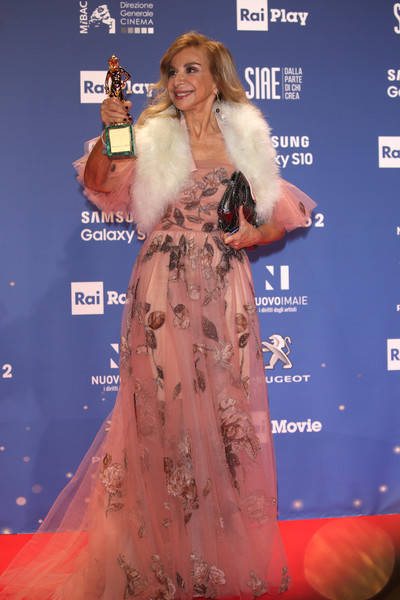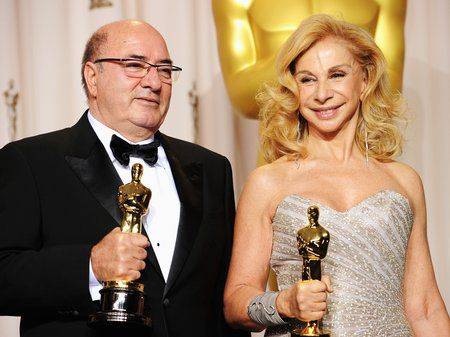The Italian Couple Behind Great Cinema
The Italian Cultural Institute in New York hosted a conversation with movie industry power couple Dante Ferretti and Francesca Lo Schiavo on May 22nd as part of the “Fare Cinema” initiative launched by the Italian Ministry of Foreign Affairs, Anica and Istituto Luce Cinecittà, in collaboration with the ASC to promote the various crafts behind the success of Italian - and global - cinema.
The conversation, moderated by journalist Maria Teresa Cometto, began with clips from the 2010 documentary “Dante Ferretti: Production Designer,” which retraces the Italian designer’s prosperous career, showing the films he has worked on, from Fellini’s “Medea” to Scorsese’s “Hugo,” one of the three films for which he and Lo Schiavo won an Oscar for Best Art Direction. (the other two are “The Aviator” and “Sweeney Todd’)
In the documentary, some of the biggest figures in Hollywood share their experiences working with Ferretti, including British screenwriter Terry Gilliam, with whom he worked on “The Adventures of Baron Munchausen,” (1988) and of course director Martin Scorsese, with whom Ferretti and Lo Schiavo have often worked.
“It’s a time capsule, the best work I’ve seen in my life,” Leonardo Di Caprio (who starred in several of those films) says about the set of “Gangs of New York.”
Ferretti speaks about working with Fellini, whom he describes as his “beacon,” who opened the doors into the movie industry for him by promoting him from Assistant to Production Designer on the set of Satyricon, after firing his boss. Ferretti has been working since he was 17 and estimates that he has done around 85 films, plus various Opera and theatre sets.
Lo Schiavo’s story is different: she was working as an interior decorator before making the switch to the movie industry. When asked why she explains that she was attracted to this world because it gave her the opportunity to work with different time periods, to be more versatile, creative. “It’s always a new challenge,” she says.
And by looking at their work, you can tell that they both love challenges. Though they are certainly very different, they share strong personalities, larger than life, just like the scenes they create. The assurance with which they have forged their way through the movie industry is remarkable, and it reveals itself in each of their interactions.
Ferretti describes himself as a maximalista and a megalomaniac (“just like Fellini.”) He expresses himself by using few words - mostly jokes - with the confidence of someone who knows he can let his work speak for him. His beautiful large sketches have been exhibited in some of the world’s most important art and design museums. “He was up in the MoMA for five months,” comments his wife. “Six,” he specifies, holding up his fingers.
Lo Schiavo, on the other hand, is much more loquacious. She commands attention and respect and quickly takes over the interview. It’s not surprising that she was able to impress Fellini to the point of obtaining an instant promotion from Assistant to Set Designer, just like her husband.
Her own self-assurance comes out in the way she approaches her work. She explains how her job can require taking on risks, like the time she had to furnish an entire villa (which had been owned by Ava Gardner) for “The Aviator”. “There was little money left because these were the last days of shooting, but the house was empty,” she explains. “But they wanted Ava Gardner’s house.” Through her contacts, she managed to get all that she needed “for almost nothing,” but everything had to go back in two days.
The couple describes working together as their “best time.” They never argue on set and always understand each other. It took a while for them to start working together though. Apparently, Ferretti was very resistant to the idea. Finally he accepted, believing that she would soon grow tired and give up.
“I had to start from the bottom. Dante didn’t introduce me to anyone,” she recounts. But, just like his, her success seemed unavoidable. Last March, she received the prestigious Special David di Donatello Award for her extraordinary career.
A montage of some of their most iconic films emphasizes their incredible talent and versatility: how they are able to create worlds in such incredible detail that it blurs the confines of the screen and you get transported inside it.
Their sets manage to visually convey multisensorial and even emotional atmospheres: In Fellini’s “E la Nave Va” you can immediately grasp the contrast between the upper and lower classes crossing the Atlantic at the turn of the century.
In some cases, the sets and costumes are what make the movie. This is true of Terry Gilliam’s “The Adventures of Baron Munchausen,” a film that is extremely over the top in the most exquisite and beautiful way, where objects and layout are as much a part of the narrative as any dialog.
When asked about experiencing regrets when rewatching a film, Lo Schiavo answers that she always wants to add something up until the very end but that ultimately her job is done when shooting begins. “I don’t usually rewatch the films I work on, but seeing these clips now I’m pretty impressed with what I’ve done,” she says.
But this doesn’t mean the Ferretti-Lo Schiavo power couple is done making films. They are now working on another Scorsese film starring De Caprio and De Niro titled “Killers of the Flying Moon,” for which filming is set to begin this Summer.








































i-Italy
Facebook
Google+
This work may not be reproduced, in whole or in part, without prior written permission.
Questo lavoro non può essere riprodotto, in tutto o in parte, senza permesso scritto.